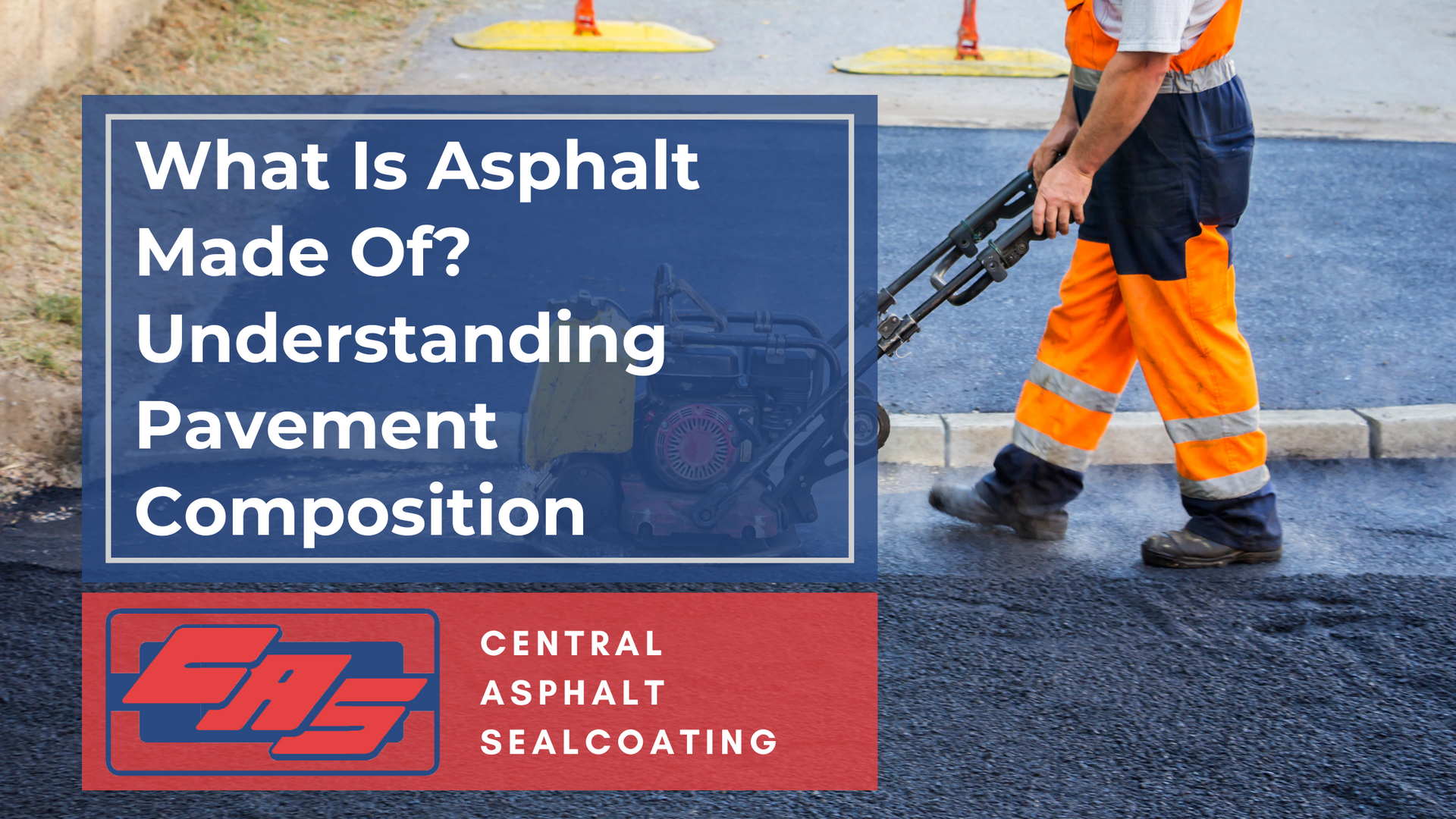
What is Asphalt Made Of? Understanding Pavement Composition
Asphalt is one of the most widely used paving materials in the world, but many property owners don't fully understand what asphalt is made of or how its composition affects performance. Understanding asphalt ingredients helps you make informed decisions about pavement maintenance, repairs, and replacements for your property.
Primary Components of Asphalt
Asphalt pavement consists of two main components: aggregate materials and asphalt binder. The aggregate makes up approximately 90-95% of the total mix, while asphalt binder comprises the remaining 5-10%. This carefully balanced combination creates a durable, flexible surface that can withstand heavy traffic loads and weather extremes.
The aggregate portion includes various sizes of crushed stone, gravel, sand, and sometimes recycled materials like reclaimed asphalt pavement (RAP) or recycled concrete. These materials provide structural strength and stability to the pavement surface.
What Is Asphalt Binder Made From?
Asphalt binder, also called bitumen, is a petroleum-based product derived from crude oil refining. This thick, sticky substance acts as the glue that holds aggregate particles together, creating a cohesive pavement surface. The binder gives asphalt its characteristic black color and waterproof properties.
Modern asphalt binders undergo careful processing to achieve specific performance characteristics. Refineries heat crude oil to separate different petroleum products, with asphalt binder being one of the heaviest fractions remaining after lighter products like gasoline and diesel are removed.
Types of Aggregate in Asphalt Mix
The aggregate component of asphalt includes several different materials sized for optimal performance. Coarse aggregate typically consists of crushed stone or gravel ranging from 3/4 inch to 1.5 inches in diameter, providing structural backbone for the pavement. Fine aggregate includes smaller stones, sand, and mineral particles that fill voids between larger pieces.
Many modern asphalt mixes incorporate recycled materials, making asphalt one of the most recycled materials in America. Reclaimed asphalt pavement from old roadways can comprise up to 30% of new mixes without compromising quality.
How Does Composition Affect Performance?
The specific ratio of aggregate to binder significantly impacts asphalt performance characteristics. Higher binder content creates more flexible pavement that resists cracking but may be prone to rutting in hot weather. Lower binder content produces stiffer pavement that handles heavy loads well but may crack more easily in cold temperatures.
Aggregate quality and gradation also affect durability, with harder stones providing better wear resistance and proper size distribution ensuring optimal compaction and void structure.
What Additives Are Used in Asphalt?
Modern asphalt often includes performance-enhancing additives. Polymers improve flexibility and temperature resistance, while anti-stripping agents help binder adhere better to aggregate in wet conditions. Some mixes include fibers for crack resistance or special modifiers for specific climate conditions.
Why Understanding Asphalt Composition Matters
Knowing what asphalt is made of helps property owners understand maintenance needs and performance expectations. Different mix designs perform better in specific applications - parking lots require different specifications than highway surfaces. Understanding these differences ensures you select appropriate materials for your specific needs.
Quality asphalt composition directly affects longevity, maintenance costs, and overall performance, making it crucial for informed pavement decisions.

Pros and Cons of Sealcoating Asphalt for Parking Lots Maintaining your business's asphalt parking lot is crucial for preserving your property's professional appearance and protecting your commercial investment. One of the most debated maintenance tasks is asphalt sealcoating. While some business owners swear by regular sealcoating, others question whether it's worth the cost and effort. Let's explore the advantages and disadvantages of sealing your commercial asphalt surfaces to help you make an informed decision. The Pros of Sealing Your Business Parking Lot Enhanced Protection from the Elements : Sealcoating creates a protective barrier that shields your asphalt from UV rays, rain, snow, and temperature fluctuations. This protection helps prevent cracking, fading, and premature deterioration that can lead to costly repairs and potential liability issues. Professional Business Image: A freshly sealed parking lot projects a professional, well-maintained business image that makes a positive first impression on customers and clients. The smooth surface also makes cleaning easier and demonstrates attention to detail that reflects positively on your brand. Extended Lifespan : Regular sealing can significantly extend your parking lot's life by up to 30%. By preventing water penetration and oxidation, sealcoating helps maintain the asphalt's flexibility and structural integrity, protecting your substantial commercial investment. Cost-Effective Maintenance : Compared to complete parking lot reconstruction, sealing is relatively inexpensive. The investment in regular maintenance can save tens of thousands of dollars in major repairs or premature replacement while maintaining business operations. Easier Snow Removal and Cleaning: The smooth, sealed surface makes snow removal more efficient and prevents stains from oil, gasoline, and other automotive fluids from penetrating deep into the asphalt. The Cons of Sealing Your Asphalt Driveway Upfront Costs and Ongoing Expense: Professional sealing costs between $0.15 to $0.50 per square foot, and the process needs repeating every 2-3 years. These recurring costs can add up over time. Weather Dependency: Sealcoating requires specific weather conditions – dry weather for 24-48 hours before and after application. This timing constraint can be challenging in certain climates. Temporary Inconvenience: The driveway becomes unusable for 24-48 hours during the curing process, which can be inconvenient for busy households. Potential for Poor Application: Improper application can lead to peeling, streaking, or uneven coverage. Using low-quality products or inexperienced contractors can result in disappointing outcomes. Not Always Necessary: New asphalt driveways don't need immediate sealing, and well-maintained driveways in mild climates may not require frequent treatment. Making the Right Choice: The decision to seal your asphalt driveway depends on factors like climate, driveway age, traffic volume, and budget. In harsh weather conditions with frequent freeze-thaw cycles, sealing provides significant benefits. However, in mild climates with newer driveways, the necessity may be less urgent. Frequently Asked Questions How often should I seal my asphalt driveway? Most experts recommend sealing every 2-3 years, but this varies based on climate, traffic, and the previous seal's condition. Can I seal my driveway myself? Yes, DIY sealing is possible with proper preparation and quality materials. However, professional application often yields better, longer-lasting results. What's the best time of year to seal a driveway? Late spring through early fall is ideal, with temperatures between 50-85°F and no rain expected for 48 hours. How long does sealcoating last? Quality sealcoating typically lasts 2-3 years, depending on weather conditions and driveway usage. Should I seal a brand new asphalt driveway? No, wait 6-12 months for new asphalt to cure properly before applying the first seal coat.











